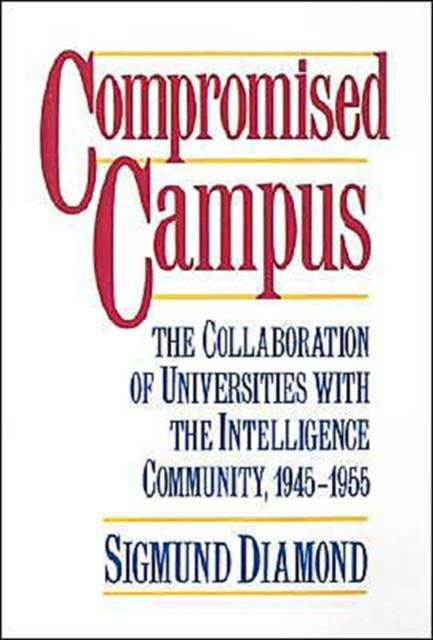
Je cadeautjes zeker op tijd in huis hebben voor de feestdagen? Kom langs in onze winkels en vind het perfecte geschenk!
- Afhalen na 1 uur in een winkel met voorraad
- Gratis thuislevering in België vanaf € 30
- Ruim aanbod met 7 miljoen producten
Je cadeautjes zeker op tijd in huis hebben voor de feestdagen? Kom langs in onze winkels en vind het perfecte geschenk!
- Afhalen na 1 uur in een winkel met voorraad
- Gratis thuislevering in België vanaf € 30
- Ruim aanbod met 7 miljoen producten
Zoeken
Compromised Campus
The Collaboration of Universities with the Intelligence Community, 1945-1955
Sigmund Diamond
Hardcover | Engels
€ 322,45
+ 644 punten
Omschrijving
In the early 1950s, a young Harvard professor named Henry Kissinger approached the FBI with alleged evidence of communist subversion among the foreign students of his summer seminar. His evidence was a flyer criticizing the nuclear arms build-up and promoting world peace. At the same time at Yale, young William F. Buckley, Jr., was discovering more than God while writing God and Man at Yale as an undergraduate. He was discovering J. Edgar Hoover. These are just two examples of how ambitious young men used the "special relationship" developing between the FBI and the universities to advance their fledgling careers. Revelations such as these abound in Sigmund Diamond's Compromised Campus, an eye-opening look at the role American intelligence agencies played at some of America's most prestigious universities. It is often said that in the 1950s, American universities were free of the McCarthyism that pervaded the rest of the nation. Not so, says Diamond. Using previously secret materials newly made available under the Freedom of Information Act, and an impressive amount of information gained from years of research in university and foundation archives, he reveals that despite academia's official story of autonomy from the federal government, in fact university administrators, faculty, and students secretly and actively sought close ties with intelligence agencies. Diamond describes the cooperation of Harvard President James B. Conant with intelligence agencies, the institution and operation of Harvard's Russian Research Center, Yale's shadowy "liaison agent" H.B. Fisher, who moved from problems of student drinking to cooperation with the FBI in loyalty-security matters, and the existence offormal and informal relations with the FBI and other intelligence agencies at major universities throughout the country. He calls attention to the cooperation of university presidents--Griswold of Yale, Dodds of Princeton, Wriston of Brown, Sproul of California, among o
Specificaties
Betrokkenen
- Auteur(s):
- Uitgeverij:
Inhoud
- Aantal bladzijden:
- 384
- Taal:
- Engels
Eigenschappen
- Productcode (EAN):
- 9780195053821
- Verschijningsdatum:
- 18/06/1992
- Uitvoering:
- Hardcover
- Formaat:
- Genaaid
- Afmetingen:
- 159 mm x 237 mm
- Gewicht:
- 798 g

Alleen bij Standaard Boekhandel
+ 644 punten op je klantenkaart van Standaard Boekhandel
Beoordelingen
We publiceren alleen reviews die voldoen aan de voorwaarden voor reviews. Bekijk onze voorwaarden voor reviews.









